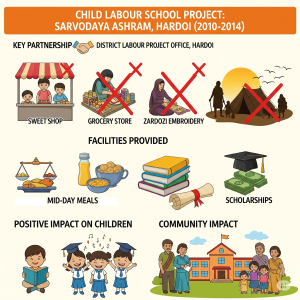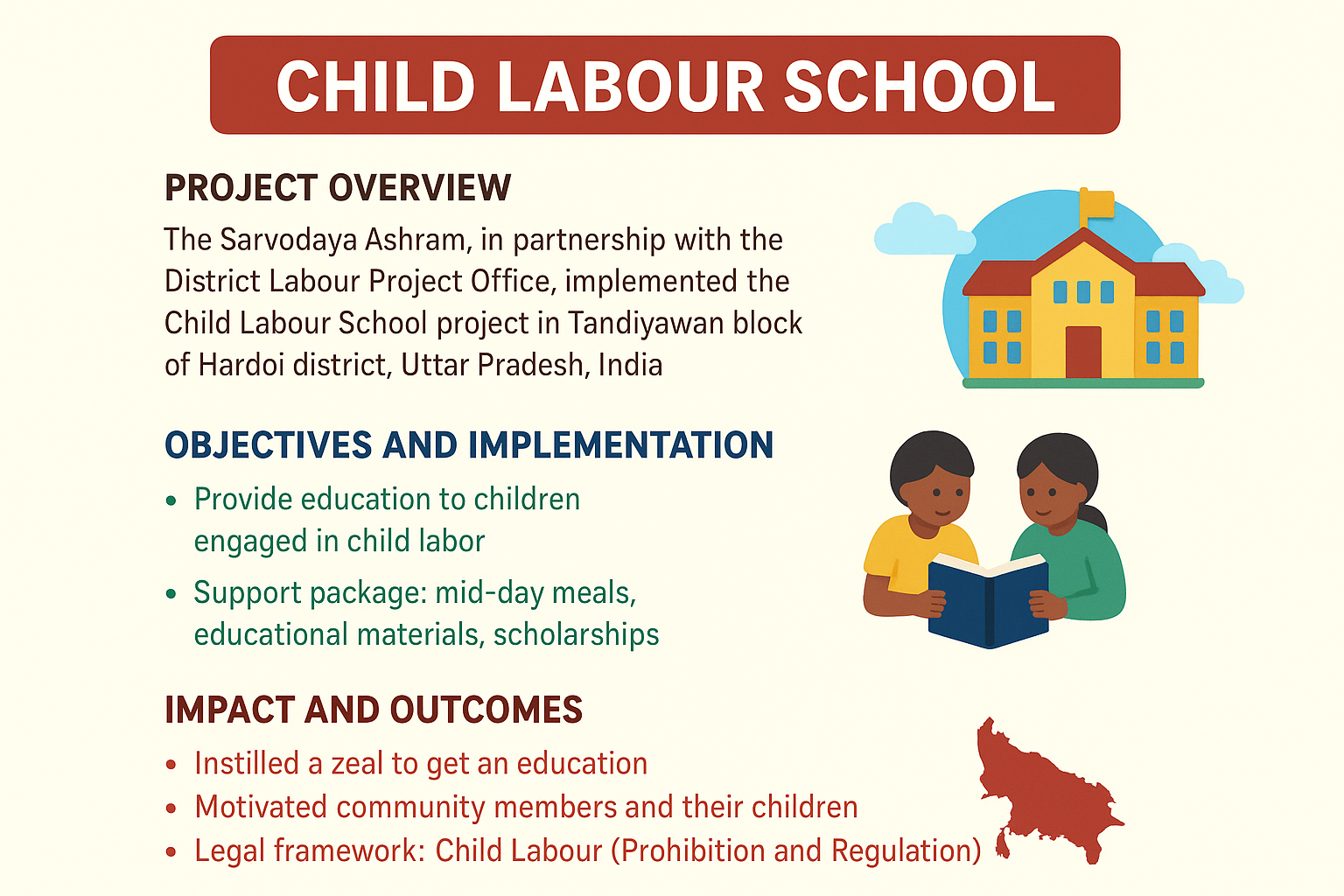Project Overview
The Sarvodaya Ashram, in partnership with the District Labour Project Office, implemented the Child Labour School project in the Tandiyawan block of Hardoi district, Uttar Pradesh 🇮🇳. The project ran from 2010 to 2014 with the primary goal of providing education to children engaged in child labor.
Project Objectives and Implementation
The initiative aimed to uplift children from vulnerable backgrounds by providing them with a formal education. The targeted children were working in various informal sectors, including sweet shops, grocery stores, and the zardozi (a type of embroidery) industry. The project also extended its support to children from the Nomad community, who were also deprived of educational opportunities.

The Child Labour School operated from 7:30 AM to 12:30 PM, a schedule designed to accommodate the children’s daily routines while providing a structured learning environment. To ensure the children’s well-being and encourage regular attendance, the project provided a comprehensive support package that included:
- Mid-day meals: A crucial incentive that addressed nutritional needs and reduced the financial burden on families.
- Educational materials: Books and exercise notebooks were provided free of charge, eliminating a significant barrier to education.
- Scholarships: Financial assistance was made available to the children through government schemes, providing further motivation for them to continue their studies.
Impact and Outcomes
The project had a profound impact on the participating children and their communities. It successfully instilled a “zeal to get an education” in the children, transforming their outlook on life. This positive change had a ripple effect, motivating other community members and their children to seek education as well.
This initiative was particularly crucial as these children represented one of the most neglected and exploited segments of society. The lack of education made them unaware of their fundamental rights, leaving them vulnerable to exploitation and forced labor. By providing them with education, the Sarvodaya Ashram empowered these children, equipping them with the tools to break the cycle of poverty and exploitation.
National and State Context
The efforts of the Sarvodaya Ashram align with national and state-level initiatives to combat child labor. According to the National Family Health Survey (NFHS), child labor remains a significant issue in India, particularly in states like Uttar Pradesh. The Census of India 2011 reported that Uttar Pradesh had one of the highest numbers of child laborers in the country. The state government, through various schemes and policies, has been working to enroll child laborers in schools and provide them with educational and vocational training.
The Child Labour (Prohibition and Regulation) Act, 1986, and its subsequent amendments, serve as the legal framework for combating child labor in India. Organizations like the Sarvodaya Ashram play a critical role in supplementing government efforts by working at the grassroots level to identify, rescue, and rehabilitate child laborers. Their success in Tandiyawan serves as a testament to the effectiveness of community-based interventions in tackling this complex social issue.
Conclusion
The Child Labour School project, implemented by Sarvodaya Ashram, stands as a milestone for organizations and individuals seeking to empower the weakest sections of society. By focusing on education, the project not only provided a path out of child labor for many children but also created a sustainable model for community-based intervention. This initiative demonstrates the power of education as a tool for social change and highlights the importance of partnerships between non-governmental organizations and government bodies in addressing critical societal challenges.

